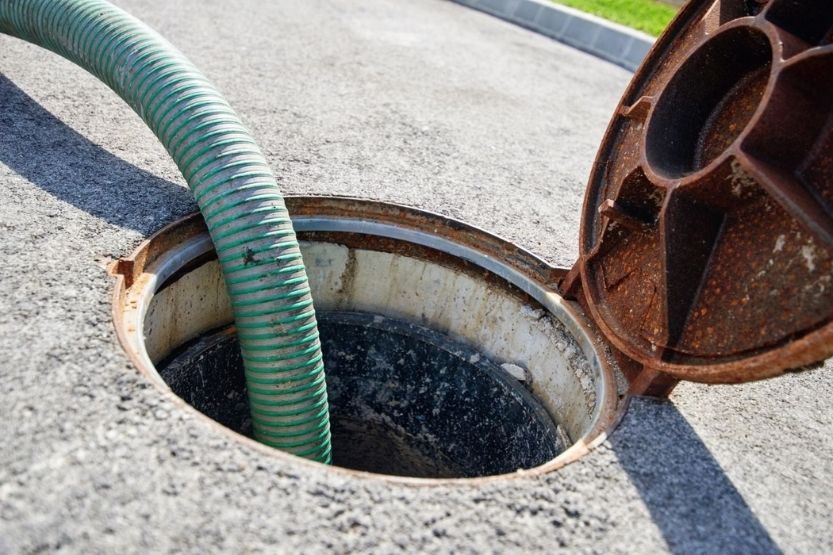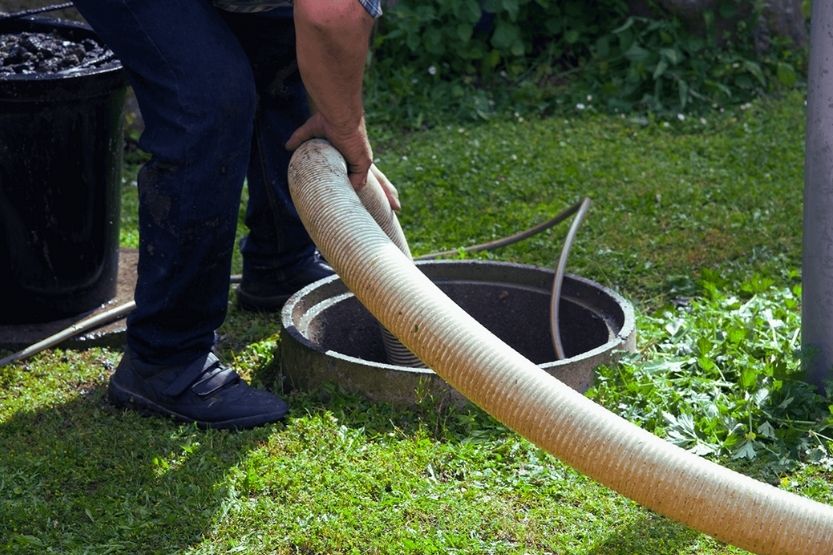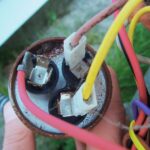Regular septic tank pumping is a must to maintain the peak functionality of your home’s plumbing system. If you just had a septic tank pumped and it’s full again, you probably wonder what is wrong.
The following are the most common causes of a full septic tank, even if it has just been pumped:
- Draining field is not working
- Excess water usage
- Clogged pipes
- Bad pumping job
Prevention is the best solution to prevent an overflowing septic tank. The most important thing to do is to conserve water. You should also avoid throwing solid waste down the drain, especially those that do not decompose easily.
Read on to learn more about the possible causes and fixes if you just had a septic tank pumped and it’s full again. Such can be frustrating and expensive, so you must know the reasons and solutions.
Just Had Septic Tank Pumped and It’s Full Again [Causes and How to Fix]

You need to pump the septic tank regularly for hygienic and practical purposes. The duration between pumps will depend on several factors, such as usage. For many, it can be anywhere from three to five years.
However, there are unfortunate instances wherein the septic tank has just been pumped but quickly fills up again. It can be because of several factors, including those that we’ll talk about below:
1. Draining Field Is Not Working
Removes and Manages Wastewater That Gets Into the Tank
Also called leach drain or leach field, the drain field is one of the most important components of your septic tank. It removes and manages the wastewater that gets into the tank. It has perforated pipes two to four feet under the ground. There can be a runoff or bad odor without a properly working drain field. Worst, the tank will overfill, even if it has just been recently pumped.
Prone to Wear Without Regular Care
One of the reasons why the drain field is not working and contributing to a full septic tank despite just a recent emptying is its age. With proper maintenance, it will last almost 50 years. Nonetheless, it can be prone to wear without regular care, resulting in slow drainage and sewage backups.
2. Excess Water Usage
Worsens Due to Presence of Sludge
Under normal usage and conditions, the septic tank will not easily get full after emptying. Nonetheless, when there is excessive water use, it can quickly overfill. Water from the dishwasher, toilets, bathroom, and kitchen contributes to overfilling. The problem worsens when there is sludge that can clog the system.
Septic Tanks’ Capacity
Most septic tanks will hold 750 to 1,250 gallons of water. Meanwhile, an average person uses 60 to 70 gallons per day in a household. The bigger the household is, the more water accumulates in the septic tank, making it easily full.
3. Clogged Pipes
Food Particles and Human Waste Can Cause Clog
Clogs in the septic line are another reason for the quick overfilling of the septic tank. When you see water overflowing from the bathroom floor, toilet, or kitchen sink, it may not be because the septic tank is already full but because of a clogged pipe. Over time, deposits such as food particles and human waste can cause a clog.
Try DIY Solutions
You can try several DIY solutions before calling a plumber if you have clogged pipes. For instance, you can use hot water or baking soda and vinegar. Septic drain cleaners with active chemicals can also solve the problem.
4. Bad Pumping Job
Over-promise and Under-deliver
Not all plumbing companies offering septic tank pumping can deliver great results. A lot of them over-promise and under-deliver. When you hire an incompetent company, you might end up having a full septic tank even if it has just been recently pumped.
Choose the Right Plumbing Contractor
The best thing to do is to choose the right plumbing contractor. Go online and do your research. Read reviews and learn from the real-life experiences of other people. Do not forget to read the terms and conditions of the job contract, especially the warranty. They must be able to do free repairs if the job is unsatisfactory.
Again, did you just have the septic tank pumped, and it’s full again – what are the reasons? If you just had your septic tank pumped, and it started to overflow again, then there’s a bigger problem. The absorption area may be no longer capable of accepting your household usage of wastewater.
Signs of a Full Septic Tank

While we are on septic tanks, you must also watch out for the many signs that it is already full. This way, you can immediately ask someone to fix the issue before it escalates and become a nightmare in your household:
1. Foul Odor
One of the most apparent indications that you have a full septic tank is when you notice a foul odor. The septic system must process sewage waste without a nasty smell. If there is, then it can indicate that it requires emptying. The most common areas where the odor will emanate would be at the following:
- Kitchen sink,
- Toilet, and
- Bathroom floor where the drain is.
2. Slow Drainage
Immediately after draining the septic tank, you will notice a significant improvement in the drainage. From the toilet bowl to the kitchen sink, water will be flowing freely down the drain. Nonetheless, you need to empty it as soon as there is an overflow. However, note a clog can cause this problem.
3. Pooling Water
As the septic tank gets full, water will overflow. The pool will be most evident around the drain field. When the toilet tanks, showerheads, and faucets leak, you can also notice this problem. It can also be indicative of other plumbing problems beyond the septic tank.
4. Sewer Backup
A sewer backup is gross and another common sign that your septic tank needs draining. The problem is most apparent in the bathrooms in the lowest part of the house, such as the basement. It shows that the water is not directed to the sewer because it has reached its capacity.
5. A Healthy Lawn
While it might seem good, an overly healthy lawn can also signify something wrong with the septic tank. This is precisely the case with the grass growing around the septic tank, which will be significantly greener than grass growing anywhere else in your lawn.
Effects of a Full Septic Tank
Do not ignore a full septic tank. Aside from being gross, it might have significant consequences, including the following:
1. Health Risks
Sewage fumes are toxic to your health. It has methane and hydrogen sulfide, which are toxic gases upon inhalation. The longer the exposure is, the more dangerous these gases can be to your health. It can also trigger airborne bacteria and pathogens.
2. Malfunctioning Plumbing System
It is frustrating when your plumbing system malfunctions, which is a result of a full septic tank. You won’t flush the toilet properly, and the sink will overflow the drain, among other effects.
3. Foul Odor
Another common effect of a full septic tank is a foul odor, which can be uncomfortable and annoying. Whether you take a bath, wash the dishes, or walk around the garden, the unpleasant smell can be apparent.
How to Care for Your Your Septic System

To prevent the septic tank from getting full quickly and maintaining its peak functionality, here are some of the most important care and maintenance tips:
1. Conserve Water
Save Money
Water conservation prevents the septic tank from getting full, even if it has just been recently pumped. Not to mention, doing so will help you save the environment while also saving money in the long run.
Invest in Water-efficient Washing Machines
Adjusting your bath routine by limiting shower time will help. It is also good to invest in water-efficient washing machines. Using a toilet that flushes less water is another great solution. You might also want to adjust the flow rate of your faucets and shower.
2. Watch What Goes Down the Drain
Another effective fix to the problem is watching what you put down the drain—having a lot of solid waste can take space in the tank and clog the drains.
The following wastes can harm your septic tank:
- Cat litter,
- Cigarette filters,
- Feminine hygiene products, and
- Coffee filters.
Avoid Using Antibacterial Soaps and Cleaners
You might also want to consider stopping using antibacterial soaps and cleaners. They contain additives and chemicals that will kill bacteria in your septic tank. Bacteria are beneficial because they will break down organic waste in the tank, freeing up space.
3. Do Not Plant Trees Near the Tank
While trees are beneficial on your lawn, you must be strategic when choosing locations to plant them. Avoid places that are near the septic tank, precisely the draining field. As the tree grows, root growth can be a problem. It can cause structural damage to the septic tank and blockages resulting in overflow.
4. Call the Right Contractor
Find One with Many Positive Reviews
As earlier mentioned, a bad plumbing job is one of the most common reasons for a full septic tank even after pumping. The best fix is to work with the right contractor. Find one with many positive reviews, as well as recommendations from people you trust. See that the company has a proven track record and state-of-the-art equipment to carry out the task effectively.
Empty Waste and Inspect the System
A good contractor will not only empty waste from the septic tank but will also inspect the system. The company should warn you of any serious problem that needs fixing. They should also give you practical tips on preventing overflowing earlier than necessary.
Conclusion – Just Had Septic Tank Pumped and It’s Full Again [Causes and How to Fix]
Ever wondered why is your septic tank full after pumping? It is a frustrating situation but can happen due to a draining field that fails to work, excessive water use, clogs in the pipes, and a bad pumping job. On average, it can take three to five years before you need to empty the septic tank. However, it can be a shorter duration when those problems are apparent.
To fix the overflowing of the septic pump, the best thing to do is to conserve water. You should also watch out for anything that goes down the drain, including solid waste. More so, planting a tree near the tank is a big no, as its roots can damage the system. Most importantly, when it is time for pumping, call the right contractor to ensure a high-quality job.



![Read more about the article Hot Water Not Working but Cold Is [How to Fix]](https://homecarezen.com/wp-content/uploads/2021/10/hot-water-not-working-but-cold-is-300x200.jpg)
![Read more about the article Toilet Randomly Runs or Flushes Itself [Causes and How to Fix]](https://homecarezen.com/wp-content/uploads/2021/05/toilet-randomly-runs-300x200.jpg)